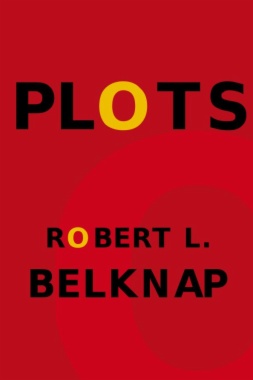Robert L. Belknap's theory of plot illustrates the active and passive roles literature plays in creating its own dynamic reading experience. Literary narrative enchants us through its development of plot, but plot tells its own story about the making of narrative, revealing through its structures, preoccupations, and strategies of representation critical details about how and when a work came into being.
Through a rich reading of Shakespeare's King Lear and Dostoevsky's Crime and Punishment, Belknap explores the spatial, chronological, and causal aspects of plot, its brilliant manipulation of reader frustration and involvement, and its critical cohesion of characters. He considers Shakespeare's transformation of dramatic plot through parallelism, conflict, resolution, and recognition. He then follows with Dostoevsky's development of the rhetorical and moral devices of nineteenth-century Russian fiction, along with its epistolary and detective genres, to embed the reader in the murder Raskolnikov commits. Dostoevsky's reinvention of the psychological plot was profound, and Belknap effectively challenges the idea that the author abused causality to achieve his ideological conclusion. In a final chapter, Belknap argues that plots teach us novelistic rather than poetic justice. Operating according to their own logic, plots provide us with a compelling way to see and order our world.
- Table of Contents
- Preface
- Introduction, by Robin Feuer Miller
- Part I. Literary Plots Deserve Still More Study
- 1. Plots Arrange Literary Experience
- 2. Plot Summaries Need More Serious Study
- 3. The Fabula Arranges the Events in the World the Characters Inhabit; the Siuzhet Arranges the Events in the World the Reader Encounters in the Text
- 4. Authors Can Relate One Incident to Another Only Chronologically, Spatially, Causally, Associatively, or Narratively
- 5. Plots are Fractal, Formed from Incidents That Are Formed from Smaller, Similarly Shaped Incidents
- 6. The Best Authorities Consider Plots and Incidents to Be Tripartite, with a Situation, a Need, and an Action
- 7. But Siuzhets and the Incidents That Form Them Have Two Parts: An Expectation and Its Fulfillment or Frustration
- Part II. The Plot of King Lear Operates Purposefully But Also Reflects the Creative Process
- 8. For Integrity of Impact, Stages, Actors, and the Audience Need a Unity of Action
- 9. Shakespeare Replaced the Greek Unity of Action with a New Thematic Unity Based on Parallelism
- 10. Shakespeare Uses Conflict, the Righting of Wrongs, the Healing of an Inruption or Disruption, and Other Standard Plotting Devices, But His Recognition Scenes Move Us Most
- 11. Shakespeare Prepares for His Recognition Scenes with Elaborate Lies
- 12. In King Lear, Shakespeare Uses Elaborated Lies to Psychologize the Gloucester Subplot
- 13. Tolstoy and Tate Preferred the Comforting Plots of Lear’s Sources to Shakespeare’s, But Shakespeare Had Considered That Variant and Rejected It
- Part III. The Plot of Crime and Punishment Draws Rhetorical and Moral Power from the Nature of Novel Plots and from the European and Russian Tradition Dostoevsky Inherited and Developed
- 14. European Novelists Elaborated or Assembled Incidents into Plots Long Before Critics Recognized the Sophistication of the New Genre in Plotting Such Subgenres as the Letter Novel and the Detective Novel
- 15. Dostoevsky Shaped and Was Shaped by the Russian Version of the Nineteenth-Century Novel
- 16. In Reinventing the Psychological Plot, Dostoevsky Challenged the Current Literary Leaders
- 17. The Siuzhet of Part 1 of Crime and Punishment Programs the Reader to Read the Rest and to Participate Actively in a Vicious Murder
- 18. The One-Sidedness of Desire and Violence in Crime and Punishment Is More Peculiar to Dostoevsky’s Plotting Than Dostoevshchina
- 19. Critics Often Attack Crime and Punishment for a Rhetoric That Exploits Causality in Ways They Misunderstand
- 20. The Epilogue of Crime and Punishment Crystallizes Its Ideological Plot
- 21. The Plots of Novels Teach Novelistic Justice, Not Poetic Justice
- Bibliography
- Index
- Works by Robert Belknap

